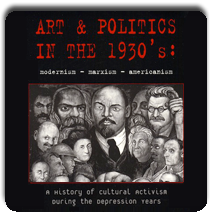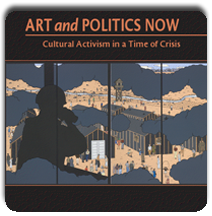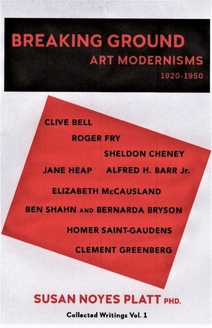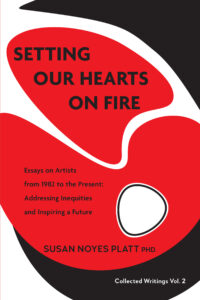Trespassing in Bellingham Washington


 One top image is by John Feoderov Totem Teddies, the bottom is by Tanis S’eilten, Blood for Shares.
One top image is by John Feoderov Totem Teddies, the bottom is by Tanis S’eilten, Blood for Shares.
This exhibition is only up until March 22. It is in the Whatcom Museum in Bellingham Washington. But what a great show. It includes all contemporary Native American art by John Feoderov, Tanis S’eilten ( two friends of mine whose work I really admire) as well as Roxanne Chinook, Ka’ili, Larry McNeil, Ramon Murillo . The works are quirky, funny and intensely political. Tanis addresses issues that relate to Alaskan natives, like the pollution from cruise ships, land grabbing then and now, and the corporate culture that was forced on native tribes in the first oil agreement for exploring the North Slope. Fedeorov is relentlessly mixing contemporary culture and religion, kitsch shamanism in works like the Office Shaman and Temple. The other artists all address environmental and cultural issues. It is so refreshing to go to show where all the artists have something to say and aren’t afraid to say it.
This entry was posted on March 9, 2009 and is filed under Trespassing.
Garden and Cosmos Seattle Asian Art Museum

The work just above is Mahraj Bakhat Singh at the Jharokha Window of the Bakhat Mahal, 1735, 37 x 29 inches. You see the Maharaj seated in a window looking down to women who are dancing.
The work at the top is Jallandharnath and Princess Padmini Fly over King Padam’s Palace, 1830.29 x 37″ This is taken from Hindu stories.
These are huge paintings.
This is an astonishing exhibition We are so fortunate in Seattle to have extraordinary exhibitions come to our city. We have the ONLY WEST COAST SHOWING of this amazing group of GIANT Indian miniature paintings, that were discovered in a chest in the home of the current Maharajah of Jodhpur. Literally, in a closet, according to Debra Diamond the curator. And they re wrote the history of Indian miniature painting. The exhibition just goes on and on with fascinating revelations. I went to this exhibition an astonishing eight times, revelling in its intricate detailed renderings of trees, birds, flowers, fish, and of course, Hindu mythology and Kingly pursuits. The first room has the Maharajah apparently relaxing entirely amid the ministrations of dozens of beautiful women. Of course I thought, oh dear, how decadent.
But appearances are deceptive. According to expert historians, the kingdom at this time (1735)was going through massive transitions from security to insecurity, from the security of affiliation with the Muslim Mughal Empire, to the insecurity of being ordinary leaders of kingdoms with ( in the case of Marwar-Jodphur one of the Rajput Kingdoms in the North) few resources. The purpose of these miniatures is to “Maintain a Kingly Aura in Hard Times” . This is the phrase of Purnima Dhavan, an assistant professor of history at the University of Washington. She gave a brilliant lecture explaining this with big arrows sweeping across the state from various directions. Therefore we can see that these paintings, like those in “Life, Liberty and the Pursuit of Happiness”, are also government propaganda.
The next two sections of the show are using religion to promote kingly power, Hinduism, and Nath yoga “aesthetic” yogis ( apparently they were very well off). But it is actually all about power plays, how leaders use the people around them, or other people to stay in power. How do artists respond to this desire by painting the invisible, that is what we learn in the last sections of the show. We of the West look at the colors, shapes, lines and say how beautiful. But there is much more to it. According to Michael Shapiro these miniatures are about sharing emotional states called Rasas. anger, fury, fear, tranquility, eroticism, pity, compassion. Perhaps that is more obvious to us now that we have all seen Slumdog Millionaire.
I am addicted to this fascinating exhibition about a period of art that I know nothing about. At the end of March, the current Maharajah Gaj Singh II came to Seattle from Jodphur. He was a delightful and modest man. He has founded an international organization that addresses head injuries because his son suffered from a serious injury in a polo fall. He is also encouraging women’s education. His position is now what he calls “tribal” . Under the British Raj in the late 19th and early 20th century, the traditional status of Maharaja’s was diminished. Then after democracy, they were further moved out of the political system. But Maharajah Gaj Singh II is still a regal figure with a deep concern for the people in his region. He pointed at the painting of the installation of the Maharajah centuries ago and said he remembered the same event in his own life when he was four years old.
This piece is called Cosmic Oceans, 1823. 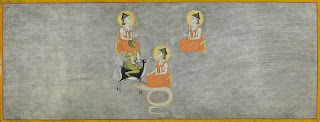
This entry was posted on March 5, 2009 and is filed under Garden and Cosmos, Purnima Dhavan.
Life Liberty and the Pursuit of Happiness
Ok, here is a chestnut. What is wrong with me you might be asking. And there is that cliche in the title of the blog. Well believe it or not, the Yale Art Gallery is loaning some of their stellar works to the Seattle Art Museum and that is the title of the show. These are the original paintings of American art history and its partner, the myth making foundations of the Republic. This painting for example is pure myth as we were told. These people were never in the same room together. John Trumbull traveled all over to get portraits and then assembled them in the painting. Of of course, all white men with property and Jefferson biggest in the center, although he owned slaves, as did George Washington.
The whole show is a stunning group of works in every sense of the word. It includes the movement west, manifest destiny ( we even have the Golden Spike photograph of the connecting of the East and West railroad in Utah, of course the Yale people don’t know about our own Seattle based Zhi Lin, and his brilliant work commenting on the marginalization of the Chinese workers in the photograph.) And great political cartoons
The Yale American Art Collection contains almost primal benchmarks of the history of American art perhaps even the history of America on some level. It includes all the major artists, Homer, Bierstadt, Eakins, even Henry Ossawa Tanner, one of the outstanding African American artists.
But it is all propaganda, by privileged artists on the East Coast, painting for a privileged audiences.
And of course artists of color are represented only lightly, one African American walking stick, one chair made by a slave, a chest maybe by Mexicans, the painting by Henry Ossawa Tanner (who had to live abroad because of racism). There are also pencil drawings of the Amistad mutineers that are worth seeing in themselves. Amistad is the name of a ship on which the slaves rose up and killed the white crew. They were tried in New Haven in 1839 during the abolition movement and then sent back to Africa. The decorative arts are more “multicultural” in a way, intriguing sources in various places in the world.
And then there is the miniature with the interwoven hair of George Washington and Martha Washington. That was kind of astonishing, and you would miss it on the back of the painted miniatures unless you know what to look for.
It is intriguing to line this show up with Cosmos and Garden at the Asian Art Museum. That is also a mythmaking show, of maharajas in India. I will get to that next entry, but not tonight.
This entry was posted on March 2, 2009 and is filed under "Life Liberty and the Pursuit of Happiness" Seattle Art Museum.
William Kentridge in Seattle
 Take a look at this image. It is pretty extraordinary. This is the work of William Kentridge in collaboration with Hand Spring Puppets and Monteverdi. We went to a press preview with an excerpt on Friday. In the center is Ulysses as a hand carved wooden puppet lying in a hospital bed dying in Johannesburg, reliving his life. He appears a second time on the right. He is remembering his return to Penelope after all those years. Penelope is on the left and in the middle are three of her courtiers. Opera singers sing the parts of the Monteverdi Opera Death of Ulysses, but the puppets are the center of attention. The opera singers are subsumed behind the puppets, the puppets move as they “sing” The micromovements of the puppets is the really subtle aspect of the performance according to the puppeteers.
Take a look at this image. It is pretty extraordinary. This is the work of William Kentridge in collaboration with Hand Spring Puppets and Monteverdi. We went to a press preview with an excerpt on Friday. In the center is Ulysses as a hand carved wooden puppet lying in a hospital bed dying in Johannesburg, reliving his life. He appears a second time on the right. He is remembering his return to Penelope after all those years. Penelope is on the left and in the middle are three of her courtiers. Opera singers sing the parts of the Monteverdi Opera Death of Ulysses, but the puppets are the center of attention. The opera singers are subsumed behind the puppets, the puppets move as they “sing” The micromovements of the puppets is the really subtle aspect of the performance according to the puppeteers.
The background has a video by Kentridge. All of these elements are pretty hard to take in at once. Then there is the Baroque instruments, period harps and other instruments. Pacific OperaWorks is bringing this complex performance to Seattle. It is really something not to miss.
 At the same time, the Henry Art Gallery is having a show of Kentridge’s work (as is the Greg Kucera Gallery, which I haven’t yet seen). It is an intriguing little collection of works that I really enjoyed. Several of his “stone age videos”, animated are always fascianting. You have to take time with them as in the bureaucrat eaten alive by his profession, and and line taking over the artist. The idea that the medium somehow has a life of its own has always been one of my favorite Kentridge ideas. His videos often seem to consume themselves, swallow themselves alive, in a type of Jonah and the whale feeling. Life is sucked out of the screen.
At the same time, the Henry Art Gallery is having a show of Kentridge’s work (as is the Greg Kucera Gallery, which I haven’t yet seen). It is an intriguing little collection of works that I really enjoyed. Several of his “stone age videos”, animated are always fascianting. You have to take time with them as in the bureaucrat eaten alive by his profession, and and line taking over the artist. The idea that the medium somehow has a life of its own has always been one of my favorite Kentridge ideas. His videos often seem to consume themselves, swallow themselves alive, in a type of Jonah and the whale feeling. Life is sucked out of the screen.
In addition, there are drawings, paintings, prints, sculpture. The little bronze collectibles set me back. They seemed so commercial. But the sugar lift aquatints really give you a sense of his graphic talent. In the show as a whole, you also have a sense of his classical roots as an artist, Durer in particular. Also his sense of humor.
Kentridge is a theater person. The opera is his idea, but of course he is using Monteverdi. The staging it with puppets and adding an animated backdrop is his idea. This is a work from 1993. It is not new, but Pacific Operaworks is new.
So where are the politics in all of this ? I asked the puppeteers and they said it wasn’t political. But I disagree. There is a lot to think about here. Fragmentation of relationships, death, life, seduction, deception, all wrapped in a multimedia complexity that requires a lot of thought. The trick is not to be seduced by any one element, but to see the big picture of where Kentridge is coming from. Life and death caught up in forces beyond their control leading to tragedy.
This entry was posted on and is filed under The Death of Ulysses. Henry Art Gallery.
Olive Ayhens new painting
 Olive Ayhens is a wonderful painter and a great artist. This is a new painting called Amphibian Emergency. If you look closely you can see that inside the glass condominiums are frogs, an endangered species. They are disappearing everywhere. They are an essential part of our ecosystem. The condos are popping up everywhere in her neighborhood of Williamsburg making communities extinct also. Condos don’t really create the same sense of comaraderie of street life celebrated by Jane Jacobson, The Death and Life of American Cities. Of course I am generalizing, but on my street in Seattle, I never see anyone from the condos.
Olive Ayhens is a wonderful painter and a great artist. This is a new painting called Amphibian Emergency. If you look closely you can see that inside the glass condominiums are frogs, an endangered species. They are disappearing everywhere. They are an essential part of our ecosystem. The condos are popping up everywhere in her neighborhood of Williamsburg making communities extinct also. Condos don’t really create the same sense of comaraderie of street life celebrated by Jane Jacobson, The Death and Life of American Cities. Of course I am generalizing, but on my street in Seattle, I never see anyone from the condos.
Outside the window is the wasteland of urban living. Olive creates interfaces of humans and nature that call attention to our treatment of the natural environment. She also is a seductive and sensuous painter who knows how to use color and the texture of paint itself so skillfully that her content and her technique are wedded inextricably. Her love of beauty in the art work is a part of her distress about the ruin of the natural environment. Since she is currently based in NYC, she is painting that distress with an urban focus. She has also painted western streams rushing down Manhattan streets with cars floating in them, and a lumber mill and power plant set right on the Columbia River . She depicts vanishing species, birds, animals, and also vanishing trees, lost in our contemporary world.
This entry was posted on February 18, 2009 and is filed under Uncategorized.
Break the Silence Mural Project
Susan Greene, of Break the Silence Mural Project (the name is coincidentally similar to, but not connected to, Breaking the Silence, a project asking Israeli soldiers involved with the war on Palestinians to speak about their experiences) gave a talk in Olympia Washington about Rafah, about bulldozed orange groves in Bil’in, about murals for peace, about people whose entire neighborhoods have been destroyed. This is a mural she painted with others a few years ago for the Amer family. Their home is completely surrounded by the wall. The only way they have survived is by all the attention they have had in the resistance movement. Greene worked with a collective and and with local children. The artists and the people helping them were driven away before they could finish the blue sky, but with the left over paint, the woman living next to the wall (and surrounded by the wall) had painted her own bedroom blue. She had brought the sky into her room.
Is this not an act of resistance to power, an act of bare life that is insisting on itself as something more. Perhaps people will argue that it is a useless decoration of an inevitable fact on the ground.
Greene is currently working with the Rachel Corrie Foundation painting a mural inOlympia Washington
Is this not an act of resistance to power, an act of bare life that is insisting on itself as something more. Perhaps people will argue that it is a useless decoration of an inevitable fact on the ground.
Greene is currently working with the Rachel Corrie Foundation painting a mural in
This entry was posted on February 16, 2009 and is filed under Break the Silence Mural Project.
Image Wars and Zones of Conflict
Sam Durant moved the detritus of war in front of the US Capitol. I have not seen artists address the topic of how much trash is generated by war. War trashes everything in its path. People, animals, culture, land, trees, and leaves a big pile of rubbish tht includes a lot of death. Durant’s manipulated photograph very simply confronts us with that fact.
He was one of the artists included in the exhibition “Image Wars”, curated by T.J. Demos.
The show was provocative. It had one manifestation at Pratt Manhattan Gallery in New York City along with a symposium. That show presented 15 artists, some working in collaboration, most of them well known. Lebanon, along with Palestine, Iraq, South Africa and the Acoma Nation. The show included mainly video and photography except for Thomas Hirshhorn’s drawing in which he is examining his relationship to the political arena in the now familiar tactic of a complicated flow chart. Hirshhorn has made seriously political work. but this piece was included in the exhibition perhaps to be emblematic of what artists think about when they engage with politics.
Other than Hirshhorn who is addressing the artist’s own position, the works expand our understanding of what is going on inside of an environment in which military attacks are destroying if not your own building, then the one next door, or in another part of the country (Lamia Joreige). Do you go and look, do you stay home and drink tea. Lamia drove nearby.
Other artists are also telling us what happens with the people who are on the ground, but not actually shooting, what happens to memory, what happens to you? Ghaith Abdul-Ahad is an Iraqi photographer and journalist who was next to a US shoot out of civilians in Iraq. His image of a screaming child in his fathers arms, which I have on my desk, is haunting beyond any image I have seen. It interrupts us entirely. We cannot avoid it. These artists are telling us that conflict is a long, wide and deep place. Ghaith Abdul-Ahad was also part of an exhibition and book called Unembedded. The photographers did work for mainstream media, but they are free lance, and the book includes a lot of work that they couldn’t get published.
Image Wars is one exhibition that is part of a bigger project called
Zones of Conflict Rethinking Contemporay Art in A Time of Crisis that included several symposia and exhibitions in London between October 2008 and February 2009. It is attempting to re think the role of artists in the midst of what is being called Zones of Conflict. This is a carefully turned phrase implying that today “war” is no longer what it used to be, a fight between nation states over specific borders, but that it has extended to the war on terror which is dominated by non state actors, deeply involves civilians as combatants and as refugees, and is characterized by media representations that falsify information, oversimplify it, or simply fail to report. Art in the midst of this new environment is playing the role of altering the media discourse.
T. J. Demos is the organizer of all of these events. His four symposia in London addressed
“image wars” ( the subject of the exhibition in NYC), “bare life” (refugees in particular), “uneven geographies”, and “transnational social space. ” He refers to the fact that these subjects exist in what he calls “rifts of representation” blurring fact and fiction, reinventing documentary photography, collaboration on socially engaged practices, and use of the internet to explore what he calls “heterogenous and uprooted representational structures”
“image wars” ( the subject of the exhibition in NYC), “bare life” (refugees in particular), “uneven geographies”, and “transnational social space. ” He refers to the fact that these subjects exist in what he calls “rifts of representation” blurring fact and fiction, reinventing documentary photography, collaboration on socially engaged practices, and use of the internet to explore what he calls “heterogenous and uprooted representational structures”
Given the crisis in Gaza, I have been focusing on that in my own writing. In the New York exhibition, Demos included Emily Jacir and Ahlam Shibli, both of whom fall into the category of reinventing documentary photography. But I also found this statement by Anjalika Sagar and Kodwo Eshun a pair of artists in one of the London symposia. They comment on the difficulty of representing Palestine, when it is non existent. How can it be made visible they ask? How has it been made visible? They use as the example the Jenin Refugee Camp, a place where the residents have been repeatedly asked to represent themselves, the artists ask if the refugees could be represented as other than victims? or other than witnesses?
Fascinating as these theoretical arguments are to thinking about the role of art in the midst of crisis, I feel that artists who are in the situation, who make connections to people like the photographer Ghaith Abdul-Ahad are more intensely engaging the same question.
This entry was posted on February 9, 2009 and is filed under T.J. Demos Image Wars Zones of Conflict.
Gloria Bornstein Some New Art

Gloria Bornstein had a small showing of her new work recently. This is what she said about it
“The title of the grouping of Rorschach tests and queens is: “you’ve been confirmed as queen”. I heard a voice saying this in a dream.
The artworks are part of a series exploring the perceptual gap between the eye as optical instrument – and the gaze of the unconscious.
Like Rorschach tests and dreams, the artworks play with objectivity, subjectivity, and the illusionary space in-between.
The artworks developed from one of many dreams I document daily, a continuing practice begun 1974″.
After reading Frank Rich in the NY Times yesterday I realized how apropos the mirrors are to the current financial hall of mirrors capitalism is mired in. The queens represent anything you project on them but Madoff (& sub-prime mortgages) are a perfect example of elation/deflation we find in dreams – awake and not). “
These evocative works are eerie, as seen in this suggestive photograph where they are reflected in a window at dusk. They come out of Gloria’s Bornstein’s subconscious. We love Gloria’s subconscious. When I need a jolt in my head I talk to Gloria, who is a private person who rarely shows personal work. But talking to her is always a treat. That is why we were so lucky to have this momentary showing ( or was it a sighting?)
The pieces were in two parts, the Rorschach drawings and the metal “crowns” based on those drawings are set on wooden heads from dummies. This is a great metaphor, a crown coming from the subconscious is placed on a dummy head. It suggests the inversion of the order of things, an accidental person becomes queen.
Since Gloria is so deep, the pieces also connect to Lacan, mirror stages, and dreams. Queens seem like a subject that doesn’t come easily in a dream. But a tiara on a wooden dummy head, this is pure comedy, pure outrageous defiance of expectations. I wish more people dared to be this ridiculous and beautiful. Life in the contemporary art world of Seattle would be a lot more interesting!.

 Gloria also has a public side: She has done a lot of incredible public art. Here I will mention only the Sentinels at the Fire station in the International District. This is what she told me about them:
Gloria also has a public side: She has done a lot of incredible public art. Here I will mention only the Sentinels at the Fire station in the International District. This is what she told me about them:
“Inspired by forms found in Asian Art, architecture, folk craft, and public safety, the multi-sculptural environment represents the guardians of the city. Just as the staff of Fire Station 10 Center in the Chinatown-International District is responsible for the public safety of the city, the surrounding Asian community has been standing watch over the interests of their neighborhood. I wrote the art plan “Different Voices, One Community” after interviewing the folks that make up the tapestry of
Is this not wonderful information. These sentinels bring together art history, political, cultural connections, and
What is amazing about Gloria’s public art is that every piece is different. See her website to know what I mean.
This entry was posted on February 6, 2009 and is filed under Dummy Queens, Gloria Bornstein.
Gaza, MLK and Obama


Last Saturday hundreds of people turned out to protest the massacre in Gaza. It was really a heavy and sad demonstration, but it was important to be there. We walked around a big double block in downtown Seattle, chanting.
The desperate situation of the Palestinians in general is what made it so sad. If you look below the completely biased US news coverage, the actual situation is that every major city is an outdoor prison, the wall is strangling the Palestinians movement and psyches, the military occupation is pervasive, and probably the other cities like Ramallah, Bethlehem, and Nazareth are thinking, we are next. The brief hiatus in the killing is just that.
Then the next day we had the MLK march, the best march of the entire year because it brings together everybody in a spirit of unity.Here I am with my grandson. We were also singing with the raging grannies. This is Max’s second MLK march. Last year he was only two months old. This year he went the whole way in his stroller, walking, and in my arms. It is the march above all others that I feel gives us hope.
Of course this year it was overlapped with the inauguration of Barack Obama the very next day, a supremely exhilarating day. It is hard to believe that we are actually rid of those crooks. Let us hope for the best. So far so good. But if Obama doesn’t really redefine the discourse in Israel/Palestine, which is almost impossible to do given the bias and ignorance in the US, the situation will be that we continue to fund Israel’s obliteration of Palestine. But many groups are working to try to help Obama to understand that a “better world is possible.” He has told us we all need to be activists. He cannot change the world alone. WOW, what a relief!! I want to feel this way for awhile.

This entry was posted on January 23, 2009 and is filed under Gaza, Inauguration, Martin Luther King, Obama.
clowns and laughter
 The all day celebration of the Feast of the Kings meant there were non stop clowns performing in the town square. These are just two groups. Here the man with the red hat.asked people to volunteer to get up on stage and do as he asked them to do. They volunteered to be various animals, monkey, giraffe, lion.
The all day celebration of the Feast of the Kings meant there were non stop clowns performing in the town square. These are just two groups. Here the man with the red hat.asked people to volunteer to get up on stage and do as he asked them to do. They volunteered to be various animals, monkey, giraffe, lion.
Everyone had a good laugh. It was really great. If only the US sponsored culture that allowed people to laugh instead of so much military hardware, the whole world would be a better place. It was a big weight lifted off to be outside the US and its pressure to have arms, security, and war.
This entry was posted on January 16, 2009 and is filed under clowns and laughter.






